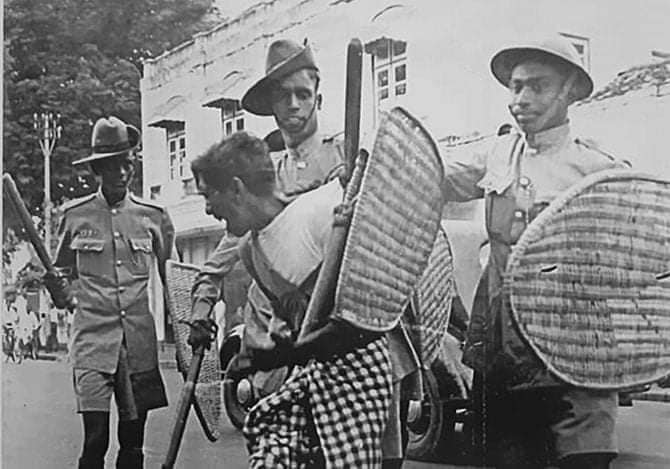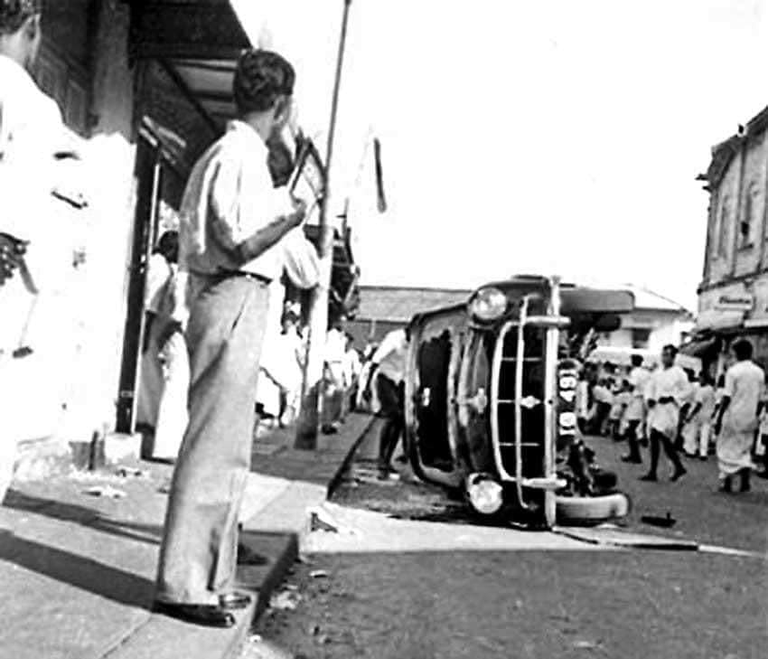People are agitating in various parts of the country demanding the current government to go home with the shortage of food, medicine, milk powder, gas and fuel in the country as well as the rising cost of living. The turning point was the recent protest held in front of President Gotabaya Rajapaksa's residence in Mirihana. It was a peaceful protest, some group took steps to add violence and later it was revealed that it was not done by the people but by a group of friends of the government. As an extension of that peaceful struggle, the struggle that the youth community of this country started at the Colombo Galle entrance has turned into a never-ending struggle that has been raging for more than a fortnight.

Their demand is that the current President Gotabhaya Rajapaksa and all the MPs including all the Rajapaksas in the Parliament give up power and give power to a group of people who can rule the country. Currently, all sections of the country are supporting the struggle and forcing the corrupt government to go home.
A similar situation occurred in 1953. It was the widespread protest against the UNP government elected in 1952 or the 53 hartal. It was also the first mass uprising after the liberation from British rule in 1948. In the 1952 general election, the United National Party led by Dudley Senanayake came to power with 2/3 of the power. Although the government made various promises to provide relief to the people. In September 1952, the price of sugar was increased by 15 cents. Then the free midday meal and glass of milk for school students was also stopped. From 21st July 1953. The price of a bushel of rice was raised from 25 cents to 72 cents. Without starting any of the development campaigns demanded by the Left, including the Ceylon Samasamaja Party, foreign reserves were being used to import luxury goods, allowing the luxury lifestyle of the elite to continue.
By 1953, the country's financial situation had started to deteriorate.
Due to the favorable situation at the beginning of the Korean War, i.e. getting a good price for rubber, Sri Lanka's foreign assets increased to 1209 million rupees by January 1952, but when the budget was presented in July 1953, it had fallen to 676 million rupees. .Finance Minister JR. By the end of July 1953, the protests that started against the budget proposals presented by Jayawardene on 23 July 1953 had reached a fever pitch. Protests, marches, black flags, lunch hour protests and picketing were held in various areas like Colombo, Kelaniya, Gampaha, Kurunegala, Anuradhapura, Weligama, Galle, Matara, Ratnapura, Batticaloa, Jaffna etc.
The wave of protests leading up to the Great Hartal began on July 22, the day after the rice price hike, in Randombe village between Balapitiya and Ambalangoda, where women and men blocked the main road and cooked on the highway. They continued their protest despite the orders of the police. Dr. Colvin R de Silva has described how it spread day by day in the areas of Madampe, Akurala, Thotagamuwa, Balapitiya, Karandeniya, Uragaha, Ahungalla in his booklet on hartal. At this time, the workers also joined the protests.
The anger of the people remained unabated, and the CSP proposed to organize a protest and a general strike, or hartal. The hartal decision was taken in a joint trade union discussion held on July 20, 1953 under the leadership of the Ceylon Trade Union Congress. It was decided to hold a one-day symbolic strike and protest movement across the country in protest against the anti-people stereotypes of the UNP government. Ceylon Communist Party led by Dr. SA Wickramasinghe, Ceylon Samasamaja Party led by Dr. NM Perera, Revolutionary Ceylon Samasamaja Party led by Philip Gunawardena led the 53 hartal. All anti-UNP groups also supported it unconditionally.
As a rehearsal for this, a large group of port workers supported the struggle by holding a symbolic strike of 3 hours on July 21, 1953. A large group of Ratmalana railway workers besieged the head office and launched an agitation campaign. The employees of the Wellawatta textile mill also went on strike for half a day on the 23rd. On July 23, the opposition held a protest rally at Galumuwadora Square.
They asked the people to support the hartal on August 12. The Federal Party also made a statement in support of it. But the SLFP and the Ceylon Labor Congress did not support it.. The UNP government threatened to take strict action against those supporting the hartal, and used all the media under its control to intimidate the people, including the dismissal of civil servants.
In protest against the government's propaganda, the LSSP published more than 100,000 copies of the Samasamajaya newspaper, the official newspaper of the Samasamajaya Party. Some union leaders succumbed to government pressure, but most unions continued to support the struggle. Urban workers mobilized peasants in their villages, organized peasants and workers for struggle, and attendance at public meetings grew. The students of Peradeniya University held a protest meeting and a demonstration, where the police attacked them with batons and dispersed them.

#blurt #blurtstory #angry #black #fight #srilanka #governmentl #home